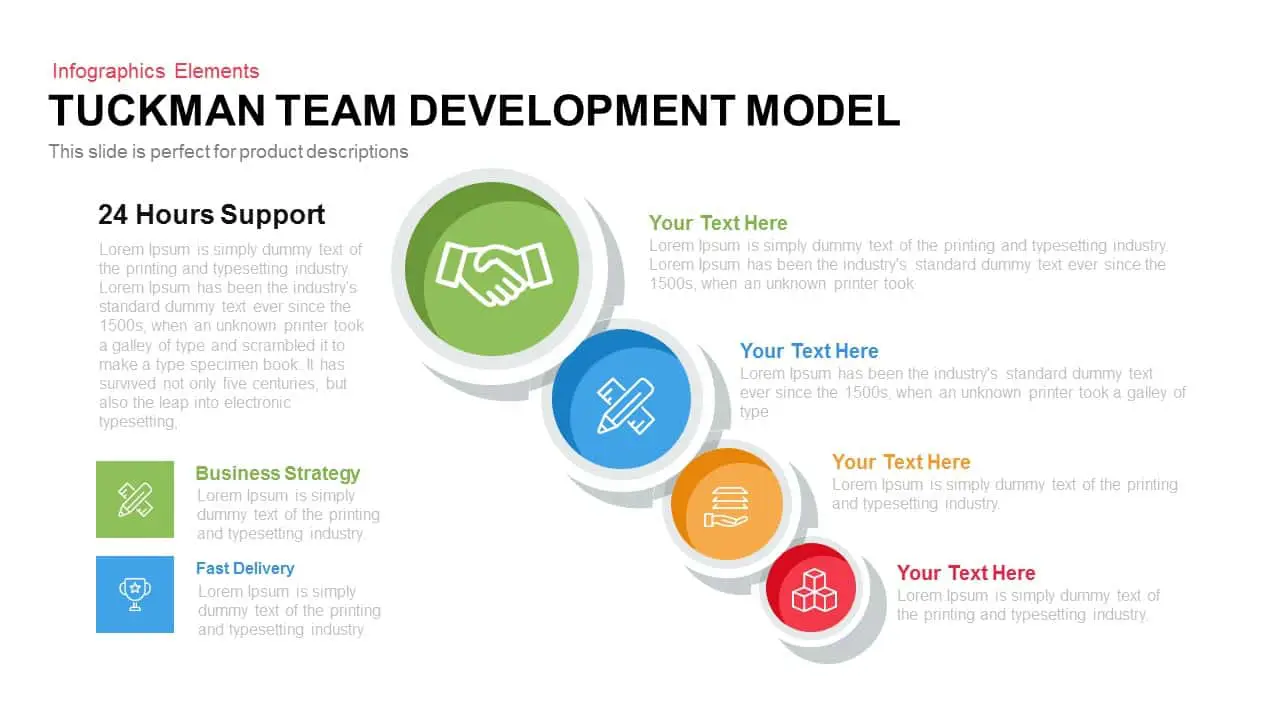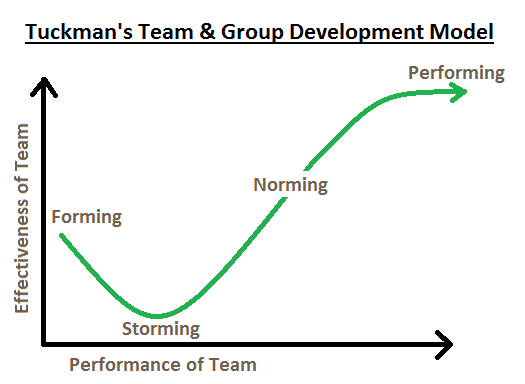Tuckman’s Stages of Group Development

The success of a business or a project depends on its team. This post explains the Tuckman 5 stages of group development, introduced by psychologist Bruce Tuckman in a practical way. It will aid us to understand the stages of development a group goes through at work, the model has its own application in a variety of fields such as networking groups, friends groups, volunteering organization, and anywhere you do need to set companionship or groups conglomeration. In fact, it applies anyplace you interact regularly with others in a group setting. Tuckman believes that this model will bring maximum performance in a group setting.
Bruce Tuckman’s Forming, Storming, Norming, and Performing model describe how a team can perform its optimal results when they are in a group situation. When you understand it, you can help your new team become in effect more promptly. Tuckman’s model helps managers, leaders and team members:
• Helps to identify what stage their team is at, assisting group members to process and understand the inevitable conflicts and changes in the time of group development.
• Support teams and groups tied through the group stages with compassion and awareness to each other.
• Ultimately improve team performance.
Let’s look at each stage in detail.

Forming
In this stage, most team members are constructive and well-mannered. Some are worried, as they haven’t fully understood what work the team will do. Others are simply thrilled about the task ahead. It is the stage where members get to know each other, and their future task. What are we working towards and why? What are everyone’s strengths, weaknesses?
At this stage people would like to create a good relationship with their teammates, they want to avoid conflicts because they want to be accepted into the group. The group is learning about the purposes and goals – getting a feel for the work that must be done organized. People be likely to focus on practical details – who, what, when and where and work sensibly self-sufficiently at this stage – while they learn where they and everyone else fits into the team.
A leader is necessary at this stage to support the team figure out aims and team roles and responsibilities. The leadership may be quite directive at this phase. At this stage, members take time to gather knowledge about the team fellows. And actions are often deferred until the guidance is clear.
Storming
At this stage where people start to push against the boundaries or bondages established in the forming stage. Conflicts may come in force because of the diverse personalities and differences in working styles. This is the stage where many teams fail. Offences and impatience that were hidden in the last stage break out and adversely affect the team’s performance.
The team must joint together to agree on how to move forwards and solve the unavoidable challenges and misunderstandings that come out as the job progresses. People are opposing, but starting to open up to each other too. As they do this, the squad begins to found how they will work together going forwards.
Storming is obvious in any group situation where the first impressions slowly melt off. Storming can also occur in other situations. For instance, team members may challenge your power or leader for position as their roles are clarified. Or, if you haven’t defined clearly how the team will work, people may feel dazed by their assignment, or they could be uncomfortable with the style you’re using.
The leader needs to make sure that team members are clear on their accountabilities and jobs to keep the team on track. Individual training may be required if team members are confused or not completing their tasks. Meanwhile, the leader may need to look forward into a more directive role to confirm the team remains professional – and tames conflict in a non-judgmental and creative way.
Norming
At this stage where people coming to the existing realities, and slowly coping with the skills and working styles of others. During this stage, the team approves the plan, timelines and who should contribute what to the proposal according to their abilities. Additionally, people start to resolve their differences, appreciate colleagues’ strengths and esteem your authority as a leader.
Some team members may ready to sacrifice their ideas and avoid disputes over them. These types of sacrifices will make the bondage tight and strengthen team rapport. Besides, team members begin to clearly see others’ strengths and admit their weaknesses.
The team will also be developing optimism and trust – serving each other and asking for help, and many teams are mingling with each other by this stage. Storming can still occur – mainly when there is change or strain on the team, but in general, the team is beginning to work efficiently. The leader can also organize involving even the personal matters of team members and events to encourage strong team-bonding that moves a group into the performing phase.
Performing
At this stage, the team is performing in accordance with objective and goals. The team functions as a single unit and the dynamism of the group will benefit the task. All team members know precisely what is expected of them and they work together towards aims and objectives. Performing teams get the job done with minimal regulation and conflict. People are inspired and proficiently get the job done. Clashes are no longer threatening and diverse viewpoints are seen as valuable. When a team completely meets this phase, it is a high-performing team.
As a leader, you can delegate much of your work, and you can focus on developing team members. For the team to accomplish at its best, a good leader will encourage healthy conflicts and help celebrate and prize attainments.
After introducing the 4 stages, Tuckman added his 5th stage, “adjourning” (which is sometimes known as “mourning”)
Adjourning
Eventually, the team members have reached the wrap-up stage. This stage is about enfolding the task and the team breaking up. It may be a challenging stage for some team members who enjoy the daily tasks, or who have made strong friendships. A leader can support by working with team members to plan their futures and what comes afterwards.
Use this framework to found where you are in the development stages, and choose what steps you personally want to take to help the team move headed for performing.


